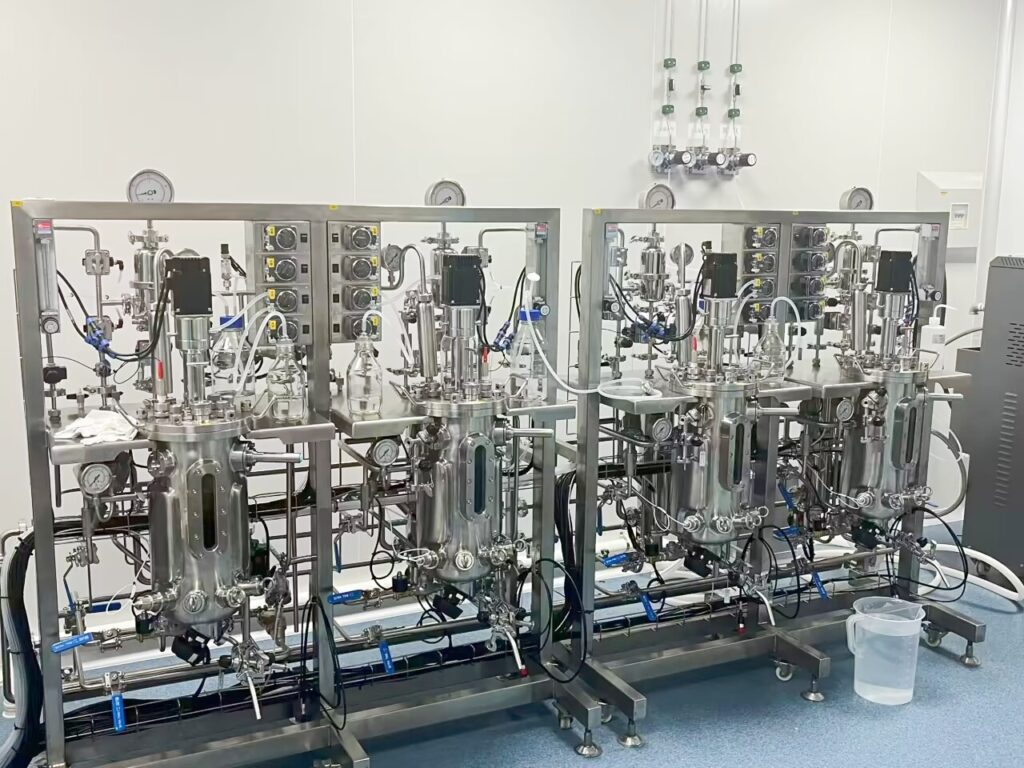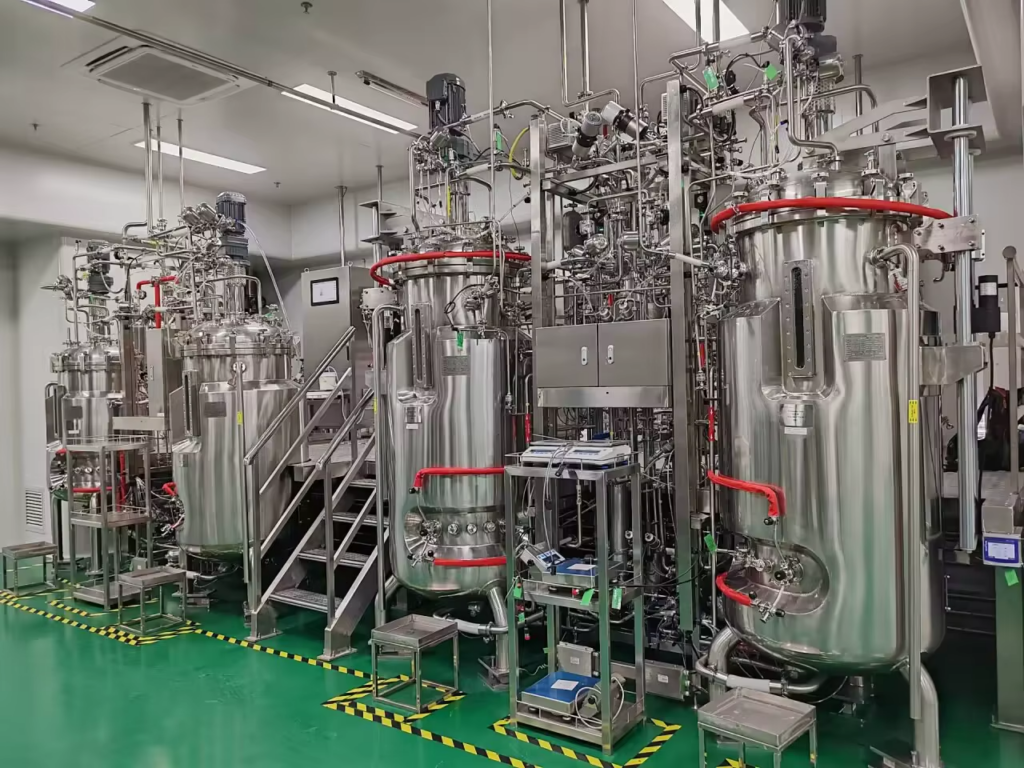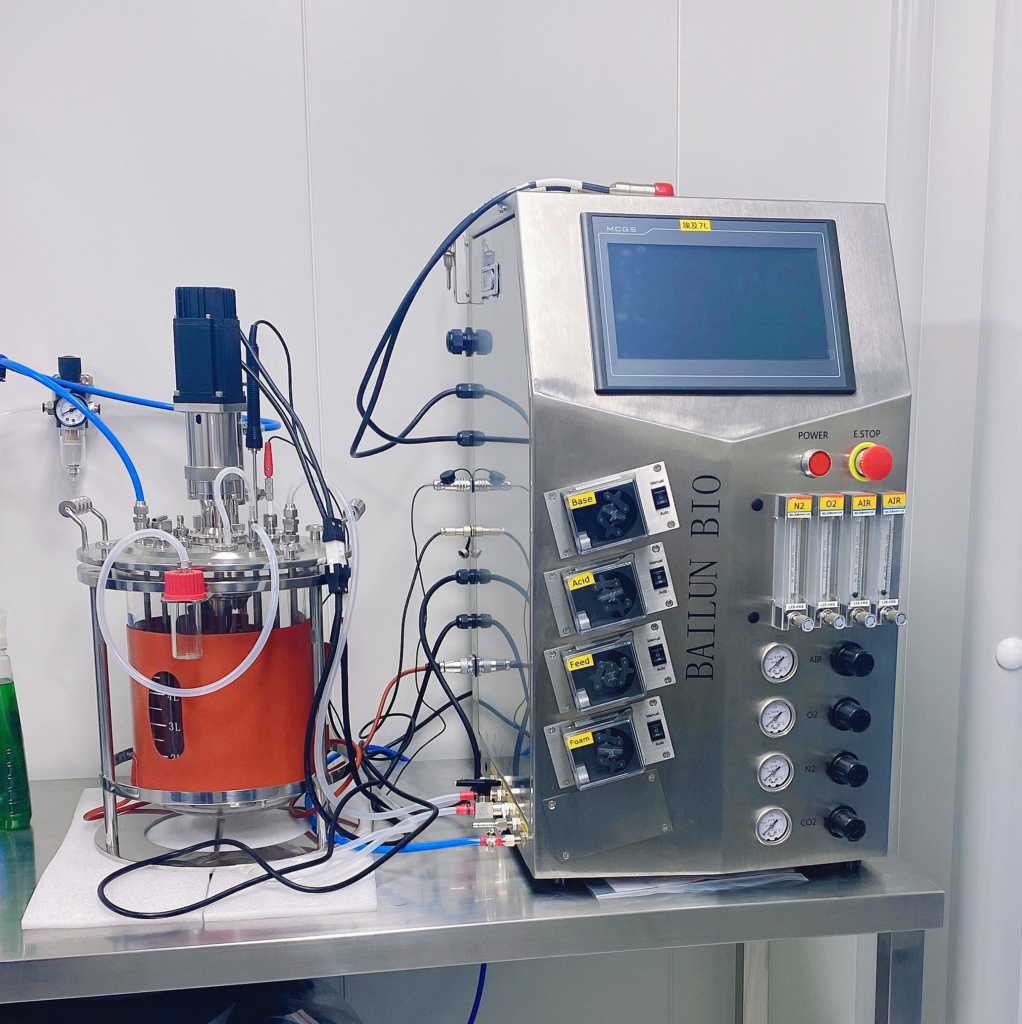
Apart from growing a specific nutrient or substances, cultivation in microbiology helps to reveal the activity, operations, and potential uses or threats of microbes. Since these tiny organisms are almost impossible to study directly to understand them and realize their full value for people, scientists use culture.
And what would it be like to have the power to control the growth of organisms that cannot be easily seen? In microbiology, culture cultivation does this very precisely and enables the use of microorganisms in various ways.
Now, what is cultivation in microbiology? Let’s look at the whole process.
How Microbial Cultivation Works
Whether you are culturing bacteria for research or for market sales, you should be able to determine how to increase bacterial growth.
Since bacteria are different and are capable of reproducing under different conditions, culturing them requires an order.

Step 1: Growth medium preparation
The growth medium provides the right phase and substrate for the bacteria to mature and multiply. The growth media may be in liquid form. For instance, a liquid broth. Or, it may be solid, such as an agar plate.
Agar is a gelatin derived from algae that contributes equal support for the growth of bacterial colonies in a photobioreactor. In cultivating bacteria, one can also change the composition of an agar plate that is used for growing bacteria, depending on the type of bacteria that is being cultivated. However, PH, temperature, and oxygen requirement should be well controlled when using growth media.
Step 2: Sterilization
For cultivation in microbiology, sterilization is essential because there’s no room for contamination. Any contamination may lead to invalid results.
All objects, growth media, petri dishes, and any glassware to be sterilized should be put in a pressure cooker or autoclave. Sterilization ensures you cultivate the bacteria you wish while ensuring that other microorganisms do not grow.
Here’s how different types of sterilization work:
- Autoclaving: In laboratories, autoclaves are often commonly applied. They use steam pressure with a temperature of about 121°C (249°F) to sterilize equipment.
- Heat Sterilization: In small and more local settings, inoculating loops and other small instruments may be sterilized through heat from a flame or an alcohol lamp.
Step 3: Inoculation
Inoculation means the introduction of bacteria into the germinating media. For this step, the sterile pipette or an inoculating loop has to be used. The inoculation can be administered as follows:
- Sterilize the loop: Return the inoculating loop to flame and heat it to a bright red heat to eliminate contamination. But let it cool for a little while.
- Transfer the bacteria: The bacterial sample may be from a swabbed plate, a soil sample, or a plate culture. Dip the loop into the sample.
- Streaking on agar plate: If any agar plate is used, then draw the loop across the plate in quadrant or in a zigzag manner. When grown on the surface, the bacteria can be separated a little as they form colonies on the surface.
When working with liquid cultures, place the bacterial sample in the broth using a sterile pipette or loop. For a better distribution of bacteria, give the broth a gentle swirl if you want to develop bacteria with high density.
Step 4: Incubation
Incubate the bacterial culture after inoculation by placing the culture in an incubator that has been set at the right temperature. The ideal temperature for a certain species of bacteria to grow.
For incubation to take a short time, note that there is a right temperature for each type of bacteria. For instance, psychrophiles ought to be in a cold environment for them to grow and evolve while thermophiles require a hot environment.
However, common bacteria like Escherichia coli can be grown at 37°C (98.6°F), an appropriate temperature for many bacteria as it is near body temperature.
Also, it is essential to monitor oxygen levels. Aerobic bacteria can be grown in air-exposed bottles since they need oxygen.
On the other hand, anaerobic bacteria require an oxygen-free environment. The conditions of low oxygen that favor such processes as anaerobic digestion and biogas production are made possible using anaerobic jars or chambers.
Step 5: Data collection and observation
After the growth of the bacteria, mostly in 24 to 48 hours, cultures develop recognizable colonies on agar plates or cloudiness in liquid media. At this point, the scientists look into the cultures that document the colony’s color, texture, and shape. This is essential in identifying bacteria species as follows:
- Colony morphology – Most bacterial colonies formed on solid media may possess different characteristics, especially in terms of color, margin outline, and surface formation.
- Optical density in liquid media – The opacity or dullness of liquid culture can give information on the amount and kind of bacteria. Microorganisms’ growth may be quantified using a spectrophotometer to measure the optical density.
Step 6: Pure culture isolation (If needed)
Some researchers may subculture a bacterial colony from an agar plate to another medium to obtain a pure culture. In research that requires precise information, this ensures that only one type of bacteria grows on the culture.
So, to subculture, the researcher uses a sterile loop to decide on the best colony to sample from and then streak this colony on a new broth or agar. Subculturing eliminates any contamination and allows further investigation of the particular bacterium.

Pure and Mixed Cultures
For cultivation in microbiology,there are many cultures used in it and each one serves a special purpose. Let’s examine these two primary categories:
Pure cultures
A pure culture contains only one type of germ. The germ is isolated from other microbes to stop intermingling. It is particularly important in investigations that study certain qualities inherent to a specific living organism that requires a pure culture.
For example, researchers employ pure cultures and biosynthesis in the pharmaceutical industry to evaluate the effects of a new antibiotic on a specific bacterial strain without interference from other species.
Researchers can also study a single species’ genome in pure cultures, providing information about its genetic composition and possible uses.
Mixed cultures
Mixed cultures are used in investigations to determine how different bacterial genera or species communicate or how microbial consortia function. For example, scientists employ different mixed cultures within their human gut microbiota studies to understand what roles individual bacterial strains play.
The Importance of Cultivation in Microbiology
Microbial cultivation of bacteria and fungi opens the door to numerous scientific, medical, and industrial discoveries. This is because scientists can study the properties of microorganisms by growing them in the laboratory. For example, various bacteria can be cultured to produce huge quantities of antibiotics.
Also, precise environmental studies have revealed that microbial growth helps break down pollutants. For instance, cultivation is critical in anaerobic digestion biogas, which involves using bacteria to decompose waste.
1. The anaerobic process: From waste to biogas
Anaerobic digestion, as used in environmental microbiology, is the process by which bacteria decompose organic matter without oxygen. This method is applicable to the production of biogas.
Biogas comprises carbon dioxide and methane. It is created when bacteria break down organic waste during anaerobic digestion. During the process, biogas is collected as a renewable energy source.
Methanogens and other anaerobes play a central role in this process. Likewise, the microbial consortia are abundantly populated with methanogens and other anaerobes. Due to this, scientists have been able to nurture these bacteria to enhance methane production.
Further, the anaerobic process gives a digestate — a nutrient value-added product utilized as a fertilizer in farming.
By successfully cultivating bacteria, industries can turn trash into agriculturally viable products and energy, demonstrating how microbial cultivation methods help create sustainable solutions.
Biological fuel cells
Microbial cultivation is gaining popularity in a new field beyond biogas production — the production of biological fuel cells. A microbial fuel cell is also called a biological fuel cell because it generates its power with the help of bacteria.
Bacteria use organic molecules to oxidize. And, during this process, electrons are generated and captured by electrodes. However, the right bacteria need to be grown for the biological fuel cells to deliver power and consistency.
Microbial fuel cells have changed the energy market since they provide a clean, renewable form of electricity, especially in areas with little or no connection to the main power grid.
Researchers are developing methods to cultivate bacteria that can sustain any conditions and produce more electrons to maximize output from biological fuel cells.
Cultivation in Microbiology and its Other Uses in Diverse Industries
Microbial cultivation is important in many different businesses and goes beyond lab research. It helps in:
1. Healthcare & medicine
Scientists study diseases through microbial cultivation. This is essential for creating medicines and vaccines. For example, a scientist might add a new antibiotic into a bacterial culture and observe the effects. This helps determine the efficiency of the drug and dosage for controlling or eradicating infections.
2. Agriculture
Microbial production forms the basis of biofertilizers and biopesticides used in agriculture. The ability of some microorganisms to perform nitrogen fixation boosts the fertility of soil.
3. Food industry
Microbial cultivation is critical in producing fermented cheese, yogurt, and soy sauce. Some bacterial or fungal strains are cultivated to ferment proteins and carbohydrates to desired tastes and textures.
4. Environmental cleanup and bioremediation.
Some bacteria are commercially crucial in bioremediation because they break down toxic substances. Scientists can use these bacteria to purify wastewater, minimize toxic sludge, and clean up the aftermath of an oil spill.
Wrapping Up
What is cultivation in microbiology? It’s a process that involves bringing microbes to life in a controlled environment in order to comprehend, utilize, and alter their capabilities. The enormous potential of these microscopic living forms can be used for human advantage through microbial cultivation — whether it be for environmental research, health, or energy production.
Innovations that are changing our world are made possible by the art and science of microbial culture cultivation. A process that enables us to investigate and make use of the invisible world of microbes.
The uses of cultivation in microbiology are numerous and expanding. They range from the production of biofuels, bioplastics, and synthetic polymers like PDO threads to the development of novel medical solutions. The potential for microbial cultivation is as limitless as the microbial world itself, provided that further research is done.
Give yourself the freedom to investigate new avenues in renewable energy, microbial cultivation, and other fields with Bailun Technologies. Explore our bioreactor solutions today!
